HSBC 2004 Annual Report Download - page 123
Download and view the complete annual report
Please find page 123 of the 2004 HSBC annual report below. You can navigate through the pages in the report by either clicking on the pages listed below, or by using the keyword search tool below to find specific information within the annual report.-
 1
1 -
 2
2 -
 3
3 -
 4
4 -
 5
5 -
 6
6 -
 7
7 -
 8
8 -
 9
9 -
 10
10 -
 11
11 -
 12
12 -
 13
13 -
 14
14 -
 15
15 -
 16
16 -
 17
17 -
 18
18 -
 19
19 -
 20
20 -
 21
21 -
 22
22 -
 23
23 -
 24
24 -
 25
25 -
 26
26 -
 27
27 -
 28
28 -
 29
29 -
 30
30 -
 31
31 -
 32
32 -
 33
33 -
 34
34 -
 35
35 -
 36
36 -
 37
37 -
 38
38 -
 39
39 -
 40
40 -
 41
41 -
 42
42 -
 43
43 -
 44
44 -
 45
45 -
 46
46 -
 47
47 -
 48
48 -
 49
49 -
 50
50 -
 51
51 -
 52
52 -
 53
53 -
 54
54 -
 55
55 -
 56
56 -
 57
57 -
 58
58 -
 59
59 -
 60
60 -
 61
61 -
 62
62 -
 63
63 -
 64
64 -
 65
65 -
 66
66 -
 67
67 -
 68
68 -
 69
69 -
 70
70 -
 71
71 -
 72
72 -
 73
73 -
 74
74 -
 75
75 -
 76
76 -
 77
77 -
 78
78 -
 79
79 -
 80
80 -
 81
81 -
 82
82 -
 83
83 -
 84
84 -
 85
85 -
 86
86 -
 87
87 -
 88
88 -
 89
89 -
 90
90 -
 91
91 -
 92
92 -
 93
93 -
 94
94 -
 95
95 -
 96
96 -
 97
97 -
 98
98 -
 99
99 -
 100
100 -
 101
101 -
 102
102 -
 103
103 -
 104
104 -
 105
105 -
 106
106 -
 107
107 -
 108
108 -
 109
109 -
 110
110 -
 111
111 -
 112
112 -
 113
113 -
 114
114 -
 115
115 -
 116
116 -
 117
117 -
 118
118 -
 119
119 -
 120
120 -
 121
121 -
 122
122 -
 123
123 -
 124
124 -
 125
125 -
 126
126 -
 127
127 -
 128
128 -
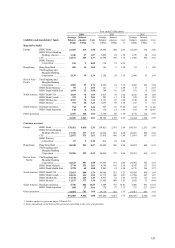 129
129 -
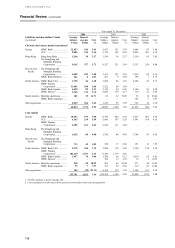 130
130 -
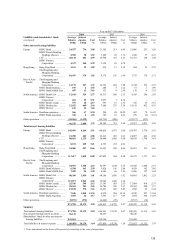 131
131 -
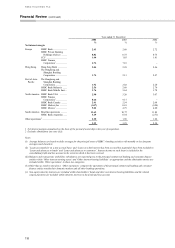 132
132 -
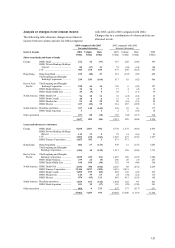 133
133 -
 134
134 -
 135
135 -
 136
136 -
 137
137 -
 138
138 -
 139
139 -
 140
140 -
 141
141 -
 142
142 -
 143
143 -
 144
144 -
 145
145 -
 146
146 -
 147
147 -
 148
148 -
 149
149 -
 150
150 -
 151
151 -
 152
152 -
 153
153 -
 154
154 -
 155
155 -
 156
156 -
 157
157 -
 158
158 -
 159
159 -
 160
160 -
 161
161 -
 162
162 -
 163
163 -
 164
164 -
 165
165 -
 166
166 -
 167
167 -
 168
168 -
 169
169 -
 170
170 -
 171
171 -
 172
172 -
 173
173 -
 174
174 -
 175
175 -
 176
176 -
 177
177 -
 178
178 -
 179
179 -
 180
180 -
 181
181 -
 182
182 -
 183
183 -
 184
184 -
 185
185 -
 186
186 -
 187
187 -
 188
188 -
 189
189 -
 190
190 -
 191
191 -
 192
192 -
 193
193 -
 194
194 -
 195
195 -
 196
196 -
 197
197 -
 198
198 -
 199
199 -
 200
200 -
 201
201 -
 202
202 -
 203
203 -
 204
204 -
 205
205 -
 206
206 -
 207
207 -
 208
208 -
 209
209 -
 210
210 -
 211
211 -
 212
212 -
 213
213 -
 214
214 -
 215
215 -
 216
216 -
 217
217 -
 218
218 -
 219
219 -
 220
220 -
 221
221 -
 222
222 -
 223
223 -
 224
224 -
 225
225 -
 226
226 -
 227
227 -
 228
228 -
 229
229 -
 230
230 -
 231
231 -
 232
232 -
 233
233 -
 234
234 -
 235
235 -
 236
236 -
 237
237 -
 238
238 -
 239
239 -
 240
240 -
 241
241 -
 242
242 -
 243
243 -
 244
244 -
 245
245 -
 246
246 -
 247
247 -
 248
248 -
 249
249 -
 250
250 -
 251
251 -
 252
252 -
 253
253 -
 254
254 -
 255
255 -
 256
256 -
 257
257 -
 258
258 -
 259
259 -
 260
260 -
 261
261 -
 262
262 -
 263
263 -
 264
264 -
 265
265 -
 266
266 -
 267
267 -
 268
268 -
 269
269 -
 270
270 -
 271
271 -
 272
272 -
 273
273 -
 274
274 -
 275
275 -
 276
276 -
 277
277 -
 278
278 -
 279
279 -
 280
280 -
 281
281 -
 282
282 -
 283
283 -
 284
284 -
 285
285 -
 286
286 -
 287
287 -
 288
288 -
 289
289 -
 290
290 -
 291
291 -
 292
292 -
 293
293 -
 294
294 -
 295
295 -
 296
296 -
 297
297 -
 298
298 -
 299
299 -
 300
300 -
 301
301 -
 302
302 -
 303
303 -
 304
304 -
 305
305 -
 306
306 -
 307
307 -
 308
308 -
 309
309 -
 310
310 -
 311
311 -
 312
312 -
 313
313 -
 314
314 -
 315
315 -
 316
316 -
 317
317 -
 318
318 -
 319
319 -
 320
320 -
 321
321 -
 322
322 -
 323
323 -
 324
324 -
 325
325 -
 326
326 -
 327
327 -
 328
328 -
 329
329 -
 330
330 -
 331
331 -
 332
332 -
 333
333 -
 334
334 -
 335
335 -
 336
336 -
 337
337 -
 338
338 -
 339
339 -
 340
340 -
 341
341 -
 342
342 -
 343
343 -
 344
344 -
 345
345 -
 346
346 -
 347
347 -
 348
348 -
 349
349 -
 350
350 -
 351
351 -
 352
352 -
 353
353 -
 354
354 -
 355
355 -
 356
356 -
 357
357 -
 358
358 -
 359
359 -
 360
360 -
 361
361 -
 362
362 -
 363
363 -
 364
364 -
 365
365 -
 366
366 -
 367
367 -
 368
368 -
 369
369 -
 370
370 -
 371
371 -
 372
372 -
 373
373 -
 374
374 -
 375
375 -
 376
376 -
 377
377 -
 378
378
 |
 |

121
For securities carried at amortised cost
impairment may result from changes in their
estimated fair value if management changes its
assumptions regarding the above variables. In such
circumstances, it will also be necessary for
management to exercise judgement as to whether or
not the indicative change in estimated fair value
arising from revisions to the underlying valuation
assumptions are only temporary.
The table below summarises HSBC’ s trading
portfolios by valuation methodology at 31 December
2004:
Trading assets Trading liabilities
Securities
purchased Derivatives
Securities
sold Derivatives
%%%%
Fair value based on:
Quoted market prices .................................................... 81.0 6.0 81.0 6.0
Internal models with significant observable
market parameters ..................................................... 18.0 93.0 19.0 94.0
Internal models with significant unobservable
market parameters ..................................................... 1.01.0––
Total .............................................................................. 100.0 100.0 100.0 100.0
For a discussion of market risk management, see
Market Risk Management on pages 167 to 172.
UK GAAP compared with US GAAP
2004 2003 2002
US$m US$m US$m
Net income
US GAAP .................... 12,506 7,231 4,900
UK GAAP .................... 11,840 8,774 6,239
Shareholders’ equity
US GAAP .................... 90,082 80,251 55,831
UK GAAP .................... 86,623 74,473 51,765
Differences in net income and shareholders’ equity
are explained in Note 49 of the ‘Notes on the
Financial Statements on pages 322 to 356.
Future accounting developments
Transition to International Financial Reporting
Standards
The adoption of International Financial Reporting
Standards (‘IFRS’ ) from 1 January 2005 is the most
significant accounting development for HSBC.
The European Union (‘EU’ ) requires that listed
European companies prepare their 2005 financial
statements in accordance with EU-endorsed IFRS.
HSBC’ s 2005 interim financial statements will,
therefore, be prepared in accordance with IFRS. The
European Union endorsement process for IFRS is
ongoing but the majority of standards are now
endorsed including IAS 32 ‘Financial Instruments:
Disclosure and Presentation’ and most of IAS 39
‘Financial Instruments: Recognition and
Measurement’ with the exception of the deletion of a
limited number of words and paragraphs in IAS 39
including those relating to the use of the ‘fair value
option’ for financial liabilities.
HSBC has substantially completed its transition
to IFRS. The process of refining systems and
processes in order to collect data on a fully IFRS-
compliant basis for 2005 reporting is well advanced.
On 9 December 2004, HSBC filed with the US
Securities and Exchange Commission a summary of
the applicable significant differences between UK
GAAP and IFRS. This should be referred to for
details of the major IFRS effects on HSBC Group,
and is available from http://www.hsbc.com/hsbc/
investor_centre/financial-results.
IFRS will also impact HSBC Holdings’
individual accounts. Investments in subsidiary
undertakings will be carried at cost rather than net
asset value, including attributable goodwill, adjusted
for shares held by subsidiaries in HSBC Holdings.
Under IFRS, in addition to the balance sheet, HSBC
Holdings will publish an income statement and other
primary financial statements.
HSBC currently intends to file 2004
comparative data and the 2005 opening balance
sheet on an IFRS basis in the second quarter of 2005.
FRS 27 ‘Life Assurance’ was issued by the UK
Accounting Standards Board (‘ASB’ ) in December
2004. This standard is effective under UK GAAP for
2005 reporting and thus should not ostensibly be
applicable to companies adopting IFRS for 2005.
However, FRS 27 adds to the requirements of IFRS
4 ‘Insurance contracts’ with regard to further
requirements in relation to measurement of realistic
liabilities and disclosure of capital position. HSBC
continues to assess the likely impact of this
accounting standard.
